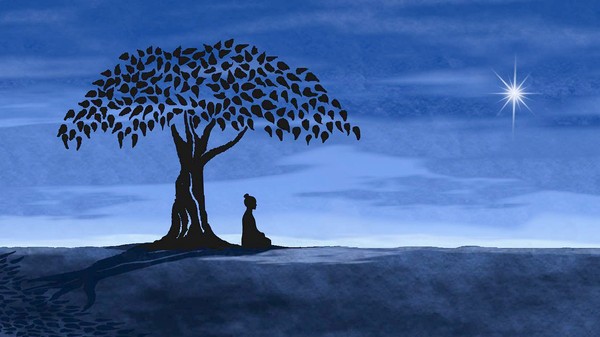Hero #025: Gautama Buddha … (05/09/16)
Gautama Buddha, also known as Siddhārtha Gautama (or simply the Buddha) was a sage on whose teachings the religion of Buddhism was founded. Born in the Shakya republic in the Himalayan foothills, he is believed to have lived and taught mostly in eastern India sometime between the sixth and fourth centuries BCE.
The word Buddha means “awakened one” or “enlightened one.” In most Buddhist traditions, Siddhartha Gautama is regarded as the Supreme Buddha. By tradition, he is said to have been destined by birth to the life of a prince, and had three palaces (for seasonal occupation) built for him. His father, said to be King Śuddhodana, wishing for his son to be a great king, is said to have shielded him from all religious teachings and from any knowledge of human suffering. Although his father ensured that Siddhartha was provided with everything he could want or need, Buddhist scriptures say that Siddhartha intuited clearly that material wealth was not life’s ultimate goal, and at the age of 29, he left his palace to immerse himself in everyday society — where he was said to have seen an old man, a diseased man, a decaying corpse, and an ascetic monk. The first three sightings depressed him, and inspired him to initially strive to overcome aging, sickness, and death by living the life of an ascetic himself.
Eventually, Gautama felt unsatisfied by the practice and moved on to become a student of yoga. Despite achieving high levels of meditative consciousness, he was once more unsatisfied, and moved on to become “enlightened” (i.e. realize “The 4 Noble Truths”) and discover what Buddhists call the Middle Way (or “The 8-fold Path”) —the active practice of conscious empowerment & contentment that led him know the bliss of personal liberation (also known as “Nirvana”); a way of Being that is equally removed from the two extremes of self-indulgence and self-denial.
For the remaining 45 years of his life, Buddha is said to have traveled in the Gangetic Plain, in what is now Uttar Pradesh, Bihar and southern Nepal, teaching a diverse range of people: from nobles to servants, from monks to murderers. According to tradition, he emphasized active ethics and humble understanding. He questioned conventional notions of divinity and salvation; teaching that there is no intermediary between mankind and the Divine — that we are actually one & the same; and that the heaven of Nirvana is available in every moment to all those willing to actively immerse themselves in the Oneness that surrounds them.
“Hatred does not cease in this world by hating, but by not hating; this is an eternal truth … The thought manifests as the word; The word manifests as the deed; The deed develops into habit; and habit hardens into character. So watch the thought and its ways with care, and let it spring from Love … If you knew what I know about the power of giving, you would not let a single meal pass without sharing it in some way … The Way is not in the sky. The Way is in the heart … Better than a thousand hollow words, is the one word that brings another peace … Teach this triple truth to all: A generous heart, kind speech, and a life of service and compassion are the things which renew humanity … There are two mistakes one can make along the road to truth: not going all the way, and not starting … However many holy words you read, however many you speak, what good will they do you if you do not act on upon them?” ~ Gautama Buddha





 ;
;